Michael Sengbusch – Facebook and Healthcare
Meet Michael Sengbusch

Since leaving Influence Health in 2017, Michael Sengbusch joined ATDC as the CTO-in-Residence. ATDC is Georgia’s oldest, largest, and most influential startup incubator. At ATDC he mentors and advises over 40 startups in Atlanta. Michael continues to be actively involved in both healthcare and marketing technology. He will be speaking at Healthbox Studio in October on healthcare marketing topics.
ATDC Healthcare Technology Vertical:
On the Get Social Health podcast, Janet interviews Michael Sengbusch about Facebook and marketing for healthcare systems. Give a listen or review the transcript notes below:
Janet: 00:00 Podcasting is a fun, yet sometimes time-consuming passion. As some of you may have noticed, I took a little hiatus from podcasting so I could focus on the launch of the Healthcare Marketing Network, a company that brings together healthcare companies with healthcare writers. I’ll tell you more about the Healthcare Marketing Network at the end of the podcast. However, in taking my little leave of absence, I had previously recorded a few interviews that hadn’t been published. Today’s conversation is with Michael Sengbusch, a healthcare technology and marketing expert. In my intro, you’ll hear that I mentioned where he was working at the time of the interview, but I’ve got a little update on Michael’s career since we recorded this interview.
Janet: 00:42 Michael Sengbusch, left Influence Health in 2017 and joined the advanced technology development center as their CTO in residence. ATDC is Georgia’s oldest, largest and most influential startup incubator. Hosted by Georgia Tech at ATDC, Michael mentors and advises over 40 startups in Atlanta. He continues to be actively involved in both healthcare and marketing technology and will be speaking at Healthbox studio in October on healthcare marketing topics.
Janet: 01:14 Now let’s jump into our conversation, a Facebook, so needed for marketing yet such a challenge to manage for healthcare. Today I’m speaking with healthcare marketing and technology expert, Michael Sengbusch about Facebook tracking and CRM on Get Social Health.
Announcer: 01:37 Welcome to Get Social Health, a conversation about social media and how it’s being used to help hospitals, social practices, healthcare practitioners and patients connect and engage via social media. Get Social Health, brings you conversations with professionals, actively working in the field and provides real-life examples of healthcare, social media in action. Here is your host, Janet Kennedy on Get Social Health.
Janet: 02:05 I’ve had the opportunity to talk to a lot of different people in my field, but occasionally I run across someone who we should have crossed paths ages ago. I don’t know how I haven’t met or talked to Michael Sengbusch. Yes, but the day is my day. I’m really excited about it. Michael is currently serving as the Influence Health senior VP and GM of Consumer Experience. Michael has established credibility through the healthcare industry as a thought leader in digital healthcare marketing and with expertise in leveraging Facebook as a successful patient acquisition channel. I know my listeners are going to be really excited about how that works. Welcome to Get Social Health, Michael.
Michael: 02:48 Thanks for having me today.
Janet: 02:49 All right. I want to jump right to how does Facebook bring patients in, but I think we need to set a few background stories here to get people up. Speed. So first off, do you mind sharing a little bit about your background and how you got into healthcare and social media?
Michael: 03:07 That’s actually kind of an interesting story. So my background is in technology and in computer science, so I’ve been kind of trained and spent the first half of my career as a software developer as an engineer and it kind of took that path and got more into product development and then sales and startups. And then I was at a startup. I was one of the early members of a company called bright whistle and we were doing digital marketing technology and we were exploring different spaces and we kind of stumbled upon a gap in a healthcare marketing technologies, particularly in the provider space with hospitals and so I don’t think when we started that we decided to go attack healthcare marketing for healthcare providers, but we did kind of stumble into that based on some connections that we hadn’t realized that it was an underserved area.
Michael: 03:56 There was a lot of opportunity there and we decided to just go heads down and work on digital marketing for healthcare providers and health systems across the country and that’s what was created as Bright Whistle which was acquired about two and a half years ago by Influence Health and I’ve stuck around here for the last couple of years and helped integrate those platforms together and it’s really kind of a grown from there.
Janet: 04:20 No, that’s exciting. You actually survived an acquisition and ended up coming out on top, so congratulations to you. Tell me a little bit about the award that you won in 2014 at Bright Whistle.
Michael: 04:32 One of the early things that we were doing was experimenting with Social Media Marketing and if you go back to 2000, 10, 2011, social media was new and social media marketing was extremely new and in healthcare it was bleeding edge if not unheard of. And so while we were doing a lot of search marketing and social marketing for, for health systems and hospitals, we were bringing that to the table and one of the reasons why we were able to do that kind of so early was we were one of the early companies that was building software and technology on top of the Facebook marketing API and when we worked with Facebook early on, the different marketing partners that they accepted in program all really had to have something unique and different about them. So you know, what were you going to bring to the table? Now some of these companies brought scale. They brought big advertisers, big dollars. We brought healthcare and that was just kind of a weird. It was, it was kind of weird for Facebook at the time. What are you guys doing in healthcare? That seems a little, it seems odd.
Michael: 05:34 but that seems interesting because we know it’s important. So we didn’t represent a huge market share as it relates to marketing. We didn’t drive a whole ton of advertising, but we brought a really interesting story to the table. So working really closely with Facebook to do marketing a technology. We participated in the 2014 Facebook innovation competition and that brings all the Facebook marketing partners together. People submit different case studies and applications from all across the globe. So there’s thousands of Facebook marketing partners, and we were awarded the winner and in our category and we were able to win that for some of the really interesting marketing group doing it Facebook, but more importantly, not just the marketing, but what we were doing with the data and how we were actually measuring the results of those marketing campaigns. So, we won that by actually using Facebook targeting Facebook marketing and then tying that to a healthcare CRM to figure out attribution and figure out what type of marketing campaigns actually generated results in a clinical setting.
Janet: 06:42 So that’s really, really exciting. Now, is that still an operation? Is that part of the Influence Health program?
Michael: 06:48 Yeah, that was actually the beginning stages of what we would call kind of our next generation CRM solution and CRM and healthcare has been something that’s been changing a lot over the last few years and one of the key components to any kind of CRM system is being able to use that not just for the outbound targeting but also that consumer experience which happens after somebody responded to a marketing campaign. So how do I learn more about that person, how do I personalize that information and then how do I use the data that I have in the CRM system, clinical information, claims information, diagnosis information in order to learn more about how that person made the healthcare decision that they made and then which channels can I better communicate to them through that?
Michael: 07:34 So that was kind of the early stages of what we call a healthcare CRM and that makes up a big portion of what we do here at Influence Health.
Janet: 07:42 Well, I do want to ask you a question about CRM and crossover. So when you talk about CRM, you literally are talking about patient information, not a marketing database or the email lists that’s used by the marketing team to send out the newsletter for the hospital.
Michael: 08:00 Yeah, I think those start to bleed together. So in a sense, depending on who you’re talking about, sometimes it could be two different things and sometimes it is the same thing and that’s kind of where I think you’ve seen marketing bleed into what you would call, you know, either CRM or into data to analytics to population health, customer service, patient satisfaction. All those things start to come together. The more you centralize that data source.
Janet: 08:27 Although I am confused or concerned at what point does a patient’s HIPAA information become a problem? I know you’re obviously not looking at individual patient records and you don’t have access at that level, but at what point is it reasonable to assume that if I am a patient of a particular hospital and you have this information about me that you have tied together, the fact that I like your Facebook page and I click on these links, is that what you’re saying you’re able to do?
Michael: 08:59 It’s a little bit more decoupled than that. So we do deal with a clinical information and patient records and that makes kind of the bulk of a healthcare CRM. So a healthcare CRM is really a combination of the clinical record combined with demographic and socioeconomic information. We use that information to run analytics, to do outbound campaigns, to pull an email list.
Michael: 09:21 That’s a very simple example when it comes to the Facebook side of things. What we’re using is the native Facebook targeting capabilities and then we are using the conversions that we’re getting through a target audience that we maybe have identified inside the Facebook and any conversions that happened through that. Whether it’s somebody making a phone call, you know, maybe somebody’s talking to a call center, somebody filling out a form or registering for an event. That information does make its way into the healthcare CRM database and that can be used for marketing standpoint, in which case none of the PHI has revealed or it can be used from an analytic standpoint in which case you mind into the clinical data to look at things like procedure codes and diagnosis codes and contribution margins and that type of more detailed clinical information.
Janet: 10:10 I didn’t even realize that this magical ability to combine social data and patient information actually existed.
Janet: 10:20 So for instance, with your tool, you can create an advertising campaign on Facebook and say, I want to target prediabetic diabetes patients and I know I need to be including these kinds of demographics. Or is that an oversimplification?
Michael: 10:40 Facebook opens up literally thousands of different demographic and socioeconomic targeting attributes directly in Facebook. So that’s probably something that anybody who’s new to Facebook marketing probably doesn’t understand about how Facebook actually makes money. I think most people think about Facebook marketing to in terms of I’m going to go after my fan base, you know, and targeting your fans is what we would call organic social and you have a relationship with your fans and that’s a way in which you can communicate to them, I would say kind of the first generation of Facebook. That’s kind of what people did, right? That was kind of the standard way to do any type of marketing.
Michael: 11:22 There’s a lot of limitations to that. Couple ones are your fan base is limited. I’m your fan base is not necessarily made up of people that you want to market to. Especially with the health system. You’ll find that a lot of people who are fans of a health systems Facebook page aren’t usually patients. A lot of times their friends and family of people who work there, so it’s not really a great targeting pool. So then it opens up the rest of kind of Facebook marketing and what people don’t usually understand about how Facebook actually makes money and how they sell ad space to marketers is Facebook is buying, you know, millions upon millions of consumer records. So Facebook will partner with folks like Experian data logics, Axiom, Bluekai, who are the same type of consumer companies that you use to do any type of consumer analysis, right? Wherever you could do direct mail or, or whatever. Facebook buys all that data and then they match it to your record inside of Facebook. they do a cross reference and they make all of those hundreds and hundreds of attributes available back to marketers who are doing marketing. And that’s how you get access to things like demographic, socioeconomic, income, education, ethnicity, all those types of targeting parameters become available via Facebook, through their acquisition of third-party consumer data.
Janet: 12:43 Okay. I have actually purchased ads on behalf of some healthcare clients and we’re doing things generally with demography, but more targeting who likes this page, who likes this association, who has an interest in this, a healthcare organization or this health issue. So, because I’m usually with my clients doing B to b business to business tracking. But what you’re saying is the hospital could be actually looking for patient profiles in.
Michael: 13:18 Yeah and the best analogy for that is healthcare CRM has existed for healthcare for probably the last seven, eight, nine years. Those types of marketing databases, the same type of queries that you would run on those, you can find good substitutes for those just querying directly into Facebook. So that’s a real easy way to open up Facebook audiences to be much bigger than just your fan base. You know, Facebook really about four years ago, five years ago, really turned their ecosystem into a pay for play kind of environment where there was not a lot of free marketing left inside of Facebook. You had to go pay, you had to run ads. It was inserting suggested content in newsfeed posts and sponsored stories directly into the newsfeed, was the way in which to actually reach your audience that you wanted to get to. so from a healthcare standpoint, that opens up a couple things.
Michael: 14:12 The first thing that opens up is it’s the largest audience that you can reach at any given point in time, online period, end of story, right? So if you had to pick one channel, if you are going to focus your dollars on Facebook’s going to be the channel that you’re going to want to spend those dollars. It’s the largest and most engaged audience that you can find online. Certainly in North America. And you can spend $5. Yeah. And it’s very cost effective where if you try to compare that to what you might do in Google, so the Google would be the other primary paid channel. Google is also highly effective and most health systems are very familiar with how to do Google ad words into how to use google to identify and capture demand. The thing with healthcare in Google though is that it can be very expensive because medical related keywords and Google can have a pretty high price tag, so highly effective, but it could be less efficient with your marketing dollars because it can be very expensive.
Michael: 15:13 Facebook has a wider reach and a more engaged audience, so that was the first part. Second part is that it also opens up mobile where most of the traffic that you’re going to see on Facebook is mobile. If you’re going to do a mobile first web strategy, you should have a mobile first marketing strategy and for us we think that that’s a Facebook strategy. I think the stat is something like one out of every five minutes spent on a mobile device is spent within Facebook, which is just an insane number. Very embarrassing for me to admit that that’s true. I get to say I do this for a living, so I have a reason to keep opening Facebook. Exactly, and it cuts across. You know, if you’re, if you’re going to go mobile, right? If, if, if that’s your strategy. The reason why I think it’s effective is I think mobile’s the one medium that kind of cuts across demographic and socioeconomic boundaries where you know, mobile, you can reach a urban audience in a rural audience, you can reach an older and a younger population.
Michael: 16:11 You can reach a affluent and a middleclass and a poor population. Everybody has a smartphone, and this wasn’t true five years ago, six years ago, but now the numbers are astounding about where people choose to use their dollars and that first purchase really from a technology standpoint, is to have a smartphone where that, you know, that technology barrier they used to talk about was, you know, there’s homes in households that couldn’t afford a computer, you know, and that’s still true, but they can afford a smartphone and you really capture everybody in that medium and Facebook is the way to do it. So Facebook’s the way you’re actually going to have the paid channel to go open up that audience on mobile. So that’s the other reason. In addition to the targeting capabilities, which I mentioned earlier, when you talk about doing Facebook marketing and advertising, obviously I assume you you’re working with the marketing channel, but do you find the clinical side of the house is interested in this data as well?
Michael: 17:10 I think the clinical side of the house is more interested in understanding the data, less about the marketing. What I hear when we talk to marketing departments is the difference between the clinical folks, the marketing folks, the population health financial folks. I think the thing that they all have in common is they all want to see some type of results and they want to see some type of measurement. That’s where I really like to focus on the data side of it and that’s why the CRM side of things is, is pretty interesting. Social for me starts to become kind of that second pillar of a two pronged kind of paid digital strategy and I think everybody is comfortable with using social as a channel just for engagement but also for acquisition and that wasn’t always the case when we were doing this kind of five or six years ago.
Michael: 17:55 We got a lot of blank stares around how we were going to use that channel. I’m not just for communication but also for for acquisition. I think everybody’s really comfortable with that now to the point where they actually expect it and I think the users have come to expect it as well and health systems have caught up to the point where they’re very comfortable working in that medium where it was. That wasn’t the case three or four or five years ago.
Janet: 18:21 What would you say healthcare is still uncomfortable with?
Michael: 18:25 That’s a good question. I have this discussion a lot with marketing departments in. It’s usually the difference between what I call, you know, HIPAA and PHI versus their privacy policy and I think these two things get conflated quite a bit in the healthcare marketing environment where what is usually a limitation of a privacy policy is kinda confused with legal guidelines and recommendations under HIPAA because they’re two totally different things.
Michael: 18:55 Right? So how you choose to communicate to a patient or prospective patient is usually covered under a privacy policy and what you see for most health systems and a privacy policy are very old, very antiquated privacy policies that were put together by an overly conservative compliance and legal department and those type of rules and restrictions usually have to deal with. If somebody has given me their information online or through the patient portal or through a form or from an inquiry, what am I limited in doing with that information and that has nothing to do with HIPAA. That has to do with the privacy policy and the website says, if you fill out some information here, we’re not going to use it for marketing. Well, plenty of health systems have more liberal policies and their privacy policies, which then gives them the ability to do standard type marketing communication such as send me an email, but respect if I opt out, you can communicate to me in many different channels, but respect if I opt out or tune out that message.
Michael: 20:03 Those things are applicable and available depending on the privacy policy. All that says is if a patient is providing information, how do you treat that information? Do you keep it secure, then mitigate risk, how do you choose to use that information based on what they’ve authorized you to use it for? So it’s usually two different things and I talked to kind of compliance departments and marketing teams about understanding the difference and what necessarily is legal versus what is allowed under your own guidelines.
Janet: 20:39 Okay. So in the Facebook world, and if I am a small business or even a healthcare organization, I have an email list of marketing email list. I can upload the email addresses only, no other information whatsoever. Facebook will try to match them and they’ll say, oh, guess what? We found about a third of your patients or customers we have now matched and we’ve created this magical file that we have tagged who your customers are. We now are going to destroy your email list. We don’t keep it, we don’t use it, we promise, we promise, and then you, you, you can use that to build your own custom audience. And then you can tell Facebook, okay, now find people who look like my people but who are not my people. Sounds great. But somewhere along the line, because this is patient information, is there an approval process necessary?
Michael: 21:34 Yeah. And that again goes back to your privacy policy. So a couple things on the process that you just walked through which is in line with what we’ve, what we do with some health systems. If their privacy policy and their compliance officers approve it. So a couple things on that. First thing is you never send an email address to Facebook. So that’s kind of a misconception is the email just never gets to Facebook. On our own servers, we do what’s called a hash encryption and that information is sent to Facebook, so the email address has never sent and the information that you send to Facebook can never be unhappy, so it’s completely like a one-way encryption essentially of that information. So because of that, there’s absolutely no way to ever have a breach. Would that information and the HIPAA and privacy guidelines, the intent of them is to mitigate risks, risk to make sure that you don’t have some type of inexperience or an Equifax breach and there’s absolutely no way in the protocol that’s used to send that information to Facebook that you could ever have a breach.
Michael: 22:35 So that’s the first thing. The second thing is when they do identify those people, they never tell you what people are actually identified. So if you send a thousand people that’s been hashed information, Facebook, they matched 700 of them. You never actually know which 700 and neither does Facebook. So it sits in a way in which it’s a one-way mapping which can never be downloaded or breached or have any type of intelligence about who that person is. So that scenario, we’ve worked with many kinds of compliance departments and legal folks at health systems and that’s usually sufficient once you walk through that and explain to them how it works, they’re cool. In fact, what I find, what happens more often is people use the same email addresses and they’re sending them to Mailchimp or constant contact or other far less secure places than sending it to Facebook.
Janet: 23:28 Okay. I’m glad you said all of that because that was obviously the one disconnect that I needed to have clarified and that little five minutes is now going to be the piece I share with everyone because I have talked to lawyers about it and they do fall back to the privacy policy, but for most part they’re not really aware of the ins and outs of how data a gets to a location b. all right. So I feel really good about that. So I’m going to encourage a lot of people to consider doing that. but tell me about where you want to take all this fascinating data and intelligence. Are you doing anything with data visualization and, and looking at a bigger picture about trends about how people are, are using a Facebook and, and is that actually triggering visits to a healthcare provider?
Michael: 24:20 Yeah. So I think as it relates specifically to Facebook, I’m a couple of years ago when I would talk about Facebook, I kind of changed how we frame Facebook. So it used to be kind of framed as hey are you doing social media marketing? And then a couple of years ago I kinda changed our approach and that kind of stopped calling it social media marketing and just lumped it in with digital marketing because it’s less about the social side of it and more about this is just the dominant place to reach people online. And the fact that it happens to be social in nature is kind of besides the point now where, you know, Facebook is. I mean it hasn’t gone anywhere. It’s been around for over 10 years, continues to grow their numbers, look, continue to look strong. Their revenue numbers are strong.
Michael: 25:09 Other competition that comes up like an Instagram, they buy Instagram, Snapchat comes up and they just replicate all of Snapchat’s features. So they buy Whatsapp, you know, they create messenger so they’re kind of here to stay. So it’s Kinda like, you know, rather than saying, do, do you do search marketing? It’s like it’s google, you know, google is kind of like Google one, right? Facebook kind of one this side of it. And when it comes to digital ad spend, there’s two dominant players. It’s Google and then Facebook and everybody else behind that are niche players at best when it comes to the ad dollars that they consume. So it’s really less than it being social because there’s lots of cool social things about it. And almost anything you do online today has some type of a social component, right? Is plugged into some type of a social graph.
Michael: 26:07 It has some type of engagement or commentary or some network effects in place. So everything’s kind of social. So treating Facebook as a social media marketing I think is kind of besides the point, and I think of it as I have a limited number of channels that I can go out to with my limited marketing dollars because we deal with health systems and in the grand scheme of things, health system is still kind of a small business when it comes to the amount of marketing dollars that they spend. You know it’s not IBM. It’s not Coca-Cola, you know they don’t. They don’t have a ton of money and so you have to be really careful about what channels you use because your marketing dollars are limited and you want to make sure that they’re going to the most efficient channels. And to me, the top two are going to be Google and Facebook and everything else. You have to make a really strong case to want to spend money in those channels after you’ve saturated Google and Facebook.
Janet: 27:02 When you work with clients, you’re coming in because you have a lot of answers and capabilities in the digital space and the online space. But the way I hear you’re talking, I’m hearing that while there shouldn’t be social media marketing or digital marketing, now I’m wondering is, is it all just marketing now and at what point are we going to stop having a digital online budget and a traditional budget and it’s all just one budget?
Michael: 27:31 That’s exactly the way people should be thinking about it. And I think what I’ve learned from doing this over the last six or seven years is people used to ask, you know, they would say, well, what channel is better or what’s better should I use this or that? And what I’ve learned is, you know, it depends, you know, different service lines have different calls to action, different, goals. And you know, running an orthopedic campaign is a lot different than running a pediatrics campaign or a breast cancer awareness campaign. You know, we’re running a bariatric surgery, campaign and all those things have different nuances about who’s the audience, how do you want to engage them, where do they respond, what are the costs in the individual channels that you could use? And I think they’re all kind of different and you do them enough and you start to figure out that there’s a different combination that works and all those combinations of channels and budget levels are really just kind of starting points and then you figure out what’s working in that individual market for that specific health system and then you go from there.
Michael: 28:34 So I think that’s a long way of saying, yeah, it should be treated as all one budget and then you figure out what’s my most efficient allocation that are the channels that are going to drive the best results. And then you go from there. I don’t think it’s one hard fast rule about what you should use or shouldn’t use, let alone do I carve out different budgets for your digital versus offline. I think it should all be looked at together and then you make a decision based on what you believe is gonna be the most efficient allocation.
Janet: 29:02 Now one of the things I’m hearing from you is really an evangelism for understanding the holistic role of marketing and of digital in the whole. And I understand that in the sense you are a thought leader and you’re going out to share this evangelism, you’re really on a speaking tour, are hitting a lot of conferences. So where are you going to be going in the next few months to tell people about, these new ideas.
Michael: 29:31 Thanks for mentioning that. I try to stay engaged with the healthcare marketing community as best I can. We were at SHSMD a couple of weeks ago and coming up here October 23rd through the 25th is going to be HCIC healthcare Internet conference that’s going to be an Austin, Texas and I’ll be doing a panel discussion there, which I’m really looking forward to. It’s going to be on the role of healthcare CRM and what does that mean moving forward. And like I was saying before, you know, CRM is a big piece of what I’ve been working on recently and marketing is a huge component to a, to a CRM system. So if anybody is going to be in Austin, Texas, October 23rd to 24th will be at the HCIC, a healthcare Internet conference that center since it’s, since we brought it up that they actually, the health care conference I think has always been the best, for the customers and for the industries and the products that I work with lately.
Michael: 30:34 I think it’s always the right mix of people. It’s not too big. It’s not too small. Always has a pretty good sense of what is trying to accomplish. The speakers are usually pretty good at the conference is not too long and again, it’s not too short. so hci is coming up and then also in 2018 I will be speaking at HIMSS this year and looking forward to that hymns. For anybody who’s not aware is enough. That’s going to be March fifth through March ninth in Las Vegas and I’ll be doing a speaking session there with Christus health. Christus health is a health system in Texas, actually much larger than that, but their headquarters in Texas. And we’re going to be talking about how to leverage healthcare CRM beyond marketing and since we’re talking primarily about kind of social and social media marketing on this call today on this podcast, I really start to see marketing bleed into a lot of different areas and marketing I think has got a lot of attention over the last five years in healthcare, but I think they’re taking on more and more responsibilities and various departments are starting to kind of bleed together.
Michael: 31:50 Is it a patient satisfaction? Is it customer service? Is it population health? All of these things start to converge and marketing’s, they’re converging with it as, as well. with how do you actually manage a patient population? How do I communicate with the community? How do I know more about my healthcare consumers so that I can better not just better market to them, but then how can I better engage with them once they come in to the health system. And that’s something that healthcare, particularly the healthcare providers are learning how to do. And as compared to other industries, they’re really not very good at it, you know, and they’re, they’re getting a lot better.
Janet: 32:26 Well, let me ask you to put your prognosticators hat on and as you are a little bit on cutting edge here, when we talk about CRM and things happening in the digital space, what you see as big changes coming down the pike, either that we can avoid the, might as well embrace it or that really could be game changers from a standpoint of healthcare marketing and slash or social media.
Michael: 32:52 Let me touch on the last point there first. So as it relates to healthcare and social media, first of all, Facebook isn’t going anywhere. I think after four years or five years of Facebook, people are like, oh, is this a fad? Is this going to be my space? Or something like that. Nope. Facebook one, it’s dominant. It’s a platform for the next 15 to 20 years. Easily. Facebook is not going anywhere. Twitter’s kind of a dud when it comes to marketing. So I was really positive on Twitter about two or three years ago and have not seen any of the campaigns that we’ve run in Twitter, provide a meaningful challenge to what we’re seeing in Facebook or google. So I think Twitter is kind of missed the boat when it comes to a paid marketing channel. Like I said before, Instagram is part of Facebook and I see a lot of great things in Instagram.
Michael: 33:43 So Facebook makes it pretty easy to extend your marketing campaigns into Instagram now. So I think that’s big. Snapchat I think is you’re kind of number three player in the social space. I dunno if it’s great for health systems yet they haven’t really figured out how to turn it into a direct response or a conversion channel. It’s more for brands, you know. So it’s getting big branding dollars from national and international advertisers don’t see it being a big channel for, for health systems yet. I’m one of the channels I’m more interested in from a marketing side is actually next door. So I don’t know if any of the listeners have used next door. Next door is a neighborhood social network and as far as an ideal audience for health systems, I think next door could be really interesting, so that’s something to be on the lookout for.
Janet: 34:33 I actually joined my organization that I’ve been living in my neighborhood for 15 years and next door has been around actually for quite a while, but I finally bit the bullet and joined I know six or eight months ago and I now actually no my neighbors all days. You take cookies next door you’d meet, people know everybody stays inside, but I feel like I know them virtually through next door and the amount of recommendations and or questions for services is amazing. Plus people give away a lot of great free stuff.
Michael: 35:06 Yup, Yup. It’s highly trusted. They’re starting to open up from a marketing standpoint, I think it’s to be determined how health systems could use it, but it seems a natural fit for community interaction for a health system, for a physician practice, for an urgent care to be nearby. Highly, highly relevant. I think for healthcare, I don’t know if it’s going to pay dividends from a marketing standpoint, but I would keep my eye on that. When it comes to kind of new and innovative things to look out for kind of coming up in the kind of the healthcare or the marketing technology space, I’ve had this question a lot and it’s not a really sexy, interesting answer. It’s really actually kind of boring if I think it’s things like call center. So the front lines of patient communication is who answers the phone when somebody responds to a marketing campaign, it’s kind of an overlooked but really critical thing that health systems do really poorly and as they get marketing sorted out, whether it’s search or social or digital or offline or email or direct mail, they’re getting those things figured out and they have their own problems and that’s getting sorted out. But the problem that persists is, hey, that’s great. You did a great marketing campaign. What happens when the person signs up for something or when they make a phone call? It’s a highly broken process from an operational standpoint, which requires a lot of technology to integrate to things like scheduling a two callbacks to follow-ups and that all connects directly to marketing if you ever want to figure out what’s happening.
Michael: 36:45 So it’s not a very interesting kind of, you know, high tech answer. It’s kind of fixed the call center.
Janet: 36:50 Well, and that’s the challenge, right? Nobody wants to work on the boring everyday stuff. They all work on the sexy new things, but I understand your title is a Senior VP and GM of Consumer Experience. That’s unique. Yeah, and I think you’re going to see that trend a lot. Even in health marketing. Our marketing teams are moving away from the marketing term and it’s kind of becoming more a patient experience. Consumer experience. When I talk and when I do, I’m a collateral or presentations. I tend to downplay words like patient because I think in healthcare now I think patient implies somebody’s sick and so much of what we’re doing is about wellness and preventative and being involved and taking care of your health and if you’re taking care of your health, I don’t think you’re a patient.
Michael: 37:40 Right. And then things when it comes to, you know, terms like acquisition rather than acquisition, things like experience where the health system is now trying to engage with the community to be able to influence the healthcare decisions that they’re making. And that crosses a wide gamut of is it preventative, is it wellness, is it child care, is it pediatricians or is what we normally think of kind of acute care, right? I’m hurt, I’m sick, I need to go to the doctor. So I think you’re seeing a lot of terminology change there and that’s happening because health systems are, are growing in their responsibilities and also that’s why you see marketing kind of bleeding into other groups and it’s becoming more about consumer healthcare, consumer experience rather than particularly how do we treat or find sick patients?
Janet: 38:31 Well, everything you’re saying is so exciting because it sounds, if not easy, doable.
Speaker 3: 38:38 Yeah. I think a lot of this stuff is pretty like I said, I think marketing’s been getting better. it’s come light years in the last four or five years. I think now they’re struggling with data and making sense of the data because there’s a lot of data from a lot of different disparate systems within the health system and then how do I actually close that middle layer? Some of it is kind of basic blocking and tackling and it’s kind of the boring stuff sometimes. But you know, a lot of successful companies, a lot of successful people got that way by solving kind of the boring problems, ones that no one else wants to tackle.
Janet: 39:14 Exactly. And make them seem fun on the front end because they weren’t focused on user experience.
Michael: 39:20 If you had asked me 20 years ago if I was going to be doing healthcare marketing and talking about a healthcare call center, I would’ve told you you’re crazy, but there’s a lot of stuff that you can do there. And I think it’s a hugely kind of overlooked, a niche in the industry and I’ve been happy to be a part of it over the last six or seven years. Well, that is exciting and I look forward to reading your posts and social and following your talks at coming up events. I think you’ve got a really great solution and I expect even better things coming from you all in 2018 and forward.
Michael: 39:51 Well, thanks again, Janet. I appreciate it. Thank you so much for being here. No problem. Talk to you soon.
Announcer: 39:57 And now here’s our social media success tip.
Jeff Callaway: 40:01 Hi, this is Jeff Callaway. I’m the Senior Content Specialist at Cook Children’s Healthcare system based in Fort Worth, Texas. My advice would be to not be too PR, which sounds weird because I work in PR and I know a lot of you listening do as well, but we try very hard to write as journalistic as possible to make the stories interesting and to make what we do appointment viewing and to create a trust with our audience that when they read it, it’s going to be real and accurate journalism.
Announcer: 40:34 You’ve been listening to the Get Social Health podcast. The show notes are [email protected] To join our healthcare social media journey, follow at, Get Social Health on Twitter and start a conversation.
Janet: 40:50 Thanks for listening to the Get Social Health podcast, a production of the healthcare marketing network, and a proud member of the healthcare podcasters community.
Janet: 40:58 I like to take a moment to tell you a bit about the healthcare marketing network. We’re a community of freelance healthcare writers. Our Organization can match your company or a healthcare practice with clinically accurate, specialized or general health care and medical content from blogs to white papers to Cmi. The healthcare marketing network has the writers that you need to reach your business audience or patients to find out more, visit healthcare marketing network.com, or contact me via social media, or you can email me, [email protected]. Thanks again for listening to the Get Social Health podcast.

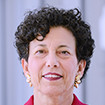
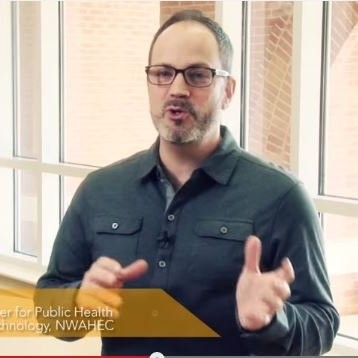

 Marie:
Marie: 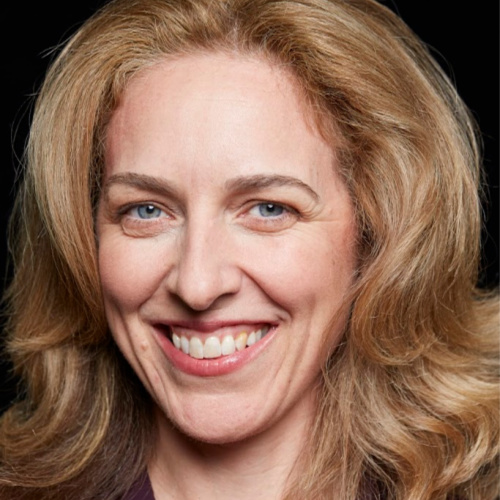

 Since leaving Influence Health in 2017, Michael Sengbusch joined ATDC as the CTO-in-Residence. ATDC is Georgia’s oldest, largest, and most influential startup incubator. At ATDC he mentors and advises over 40 startups in Atlanta. Michael continues to be actively involved in both healthcare and marketing technology. He will be speaking at Healthbox Studio in October on healthcare marketing topics.
Since leaving Influence Health in 2017, Michael Sengbusch joined ATDC as the CTO-in-Residence. ATDC is Georgia’s oldest, largest, and most influential startup incubator. At ATDC he mentors and advises over 40 startups in Atlanta. Michael continues to be actively involved in both healthcare and marketing technology. He will be speaking at Healthbox Studio in October on healthcare marketing topics.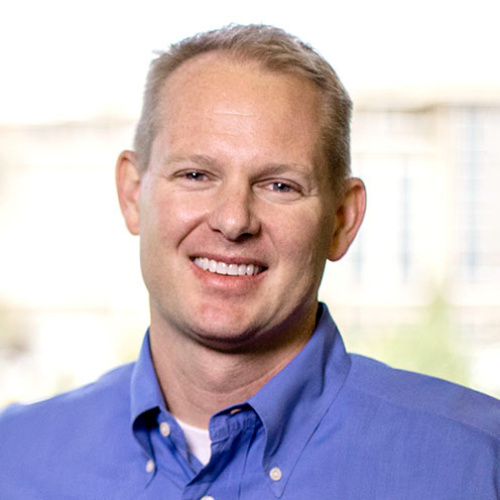
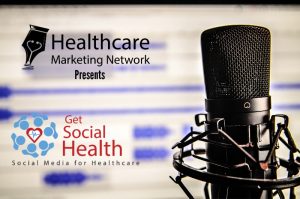 Connect with Solutionreach
Connect with Solutionreach